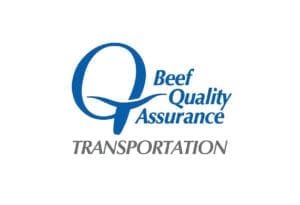By Megan Webb, Ph.D., Contributing Editor
As fall rolls in, cattle producers are moving their herds from summer pastures to crop residues or dry lots for the winter. The sight of cattle trailers cruising down highways is like a rolling billboard for the industry. It’s critical for producers to follow best practices for cattle transport, considering everything from loading conditions to weather, transit times and animal health. Stress can harm cattle – they lose weight, their immune systems weaken and they may go off feed. Minimizing stress during transport benefits both animals and producers.
Minimizing stress during transport benefits both animals and producers.
Fortunately, resources are available to help cattle haulers manage these challenges. The Beef Quality Assurance Transportation (BQAT) program offers online training modules, and the National BQA YouTube channel provides tips and checklists for safe cattle transport. These tools highlight the importance of proper feeding and hydration before long trips and careful handling during loading and unloading. Additionally, websites like interstatelivestock.com help producers navigate different state regulations, reducing the risk of violations when crossing state lines. Using these tools can help producers keep cattle healthy while promoting a positive industry image.
Specific cattle types, such as bob veal calves and cull cows, present additional transport challenges. Bob veal calves, often younger than 21 days old, require special care to prevent health issues. Ensuring these calves are fit for transport and keeping them warm and dry can help avoid problems at the packing plant. Similarly, when moving cattle from ranches to feedlots, stress factors like noise, trailer vibrations and extreme temperatures can weaken the animals’ immune systems. Preconditioning calves – getting them weaned and vaccinated before transport – can help them better handle the journey and stay healthier upon arrival.
In the dairy industry, transporting preweaning calves presents distinct challenges. These newborns, sometimes only a day old, are particularly vulnerable to dehydration and hypoglycemia due to their weak immune systems. Assessing their fitness for transport, delaying trips until they are a bit older and providing appropriate care along the way are essential. Collaboration among dairy farmers and haulers to improve calf welfare during transport can significantly enhance their ability to endure the journey.
Cull cows, which account for a significant portion of dairy cattle transport in the United States, face their own welfare concerns. Nearly one-third of dairy cows are culled annually, and many are transported long distances for harvest. This can be particularly tough on compromised cows that are not fit for transport. One of the major issues in the industry is the decision to transport compromised cows. Financial incentives drive this practice, as slaughter plants may accept these animals, hoping for a profit. Direct transport to slaughter, which minimizes travel time and stress, should be prioritized over sending cows through markets or auctions.
U.S. transport guidelines require cattle to rest after 28 hours, but enforcement gaps exist, and opportunities for cows to rest during transport are limited. Research has shown that cows deprived of rest and food for just a few hours will prioritize lying down over eating when given the chance. This underscores the importance of providing cattle with adequate rest during transport to reduce the journey’s physical toll.
At the end of the day, cattle producers and haulers have a major responsibility when it comes to transporting livestock. By using available resources, following best practices and making thoughtful decisions, they can keep their animals healthy and minimize stress during transport. Whether it’s ensuring cull cows are fit for transport or improving the care of calves, paying attention to these details makes a significant difference. These efforts not only protect animal welfare but also enhance the industry’s reputation and bottom line. In this way, cattle trailers aren’t just rolling billboards – they represent responsible livestock management.







